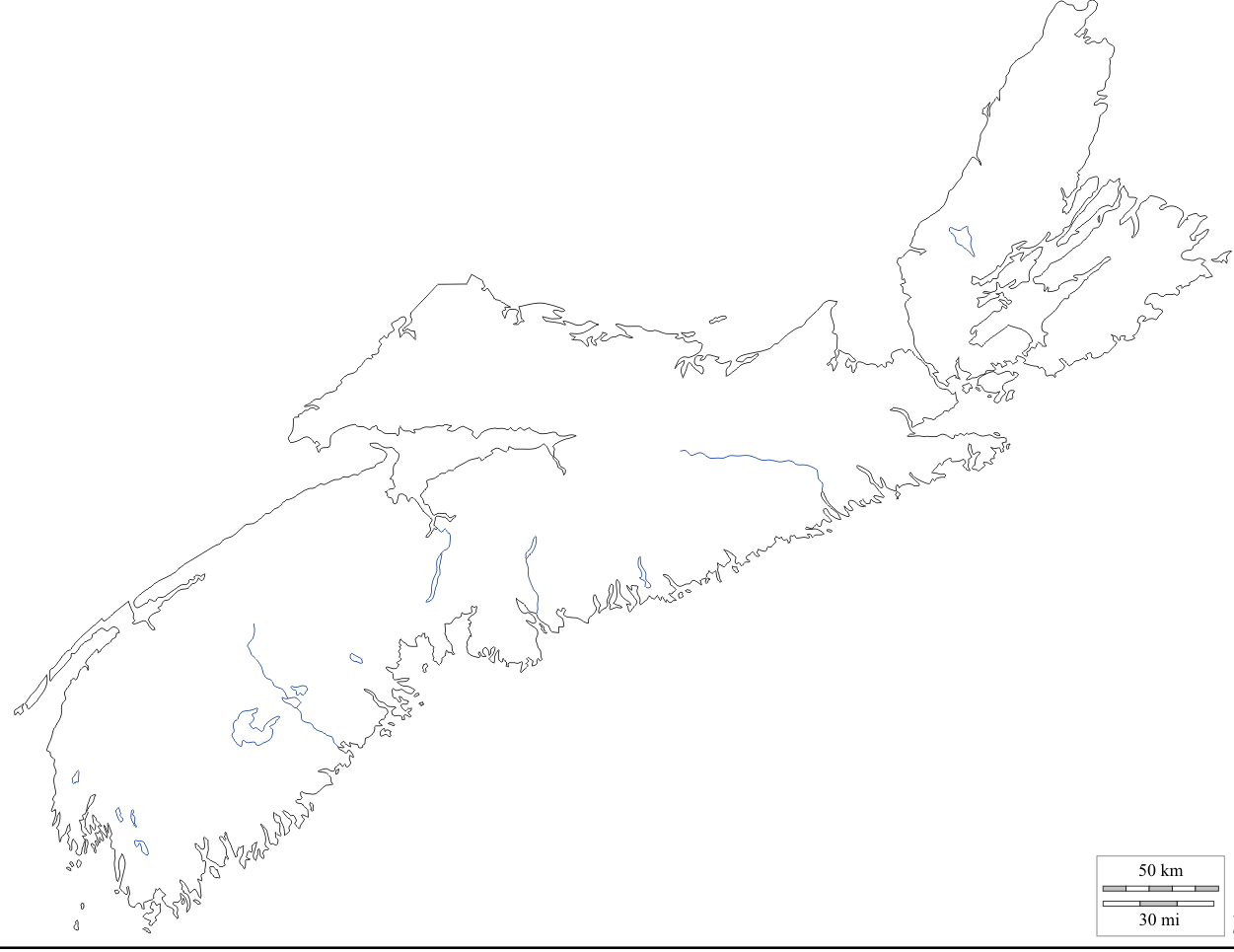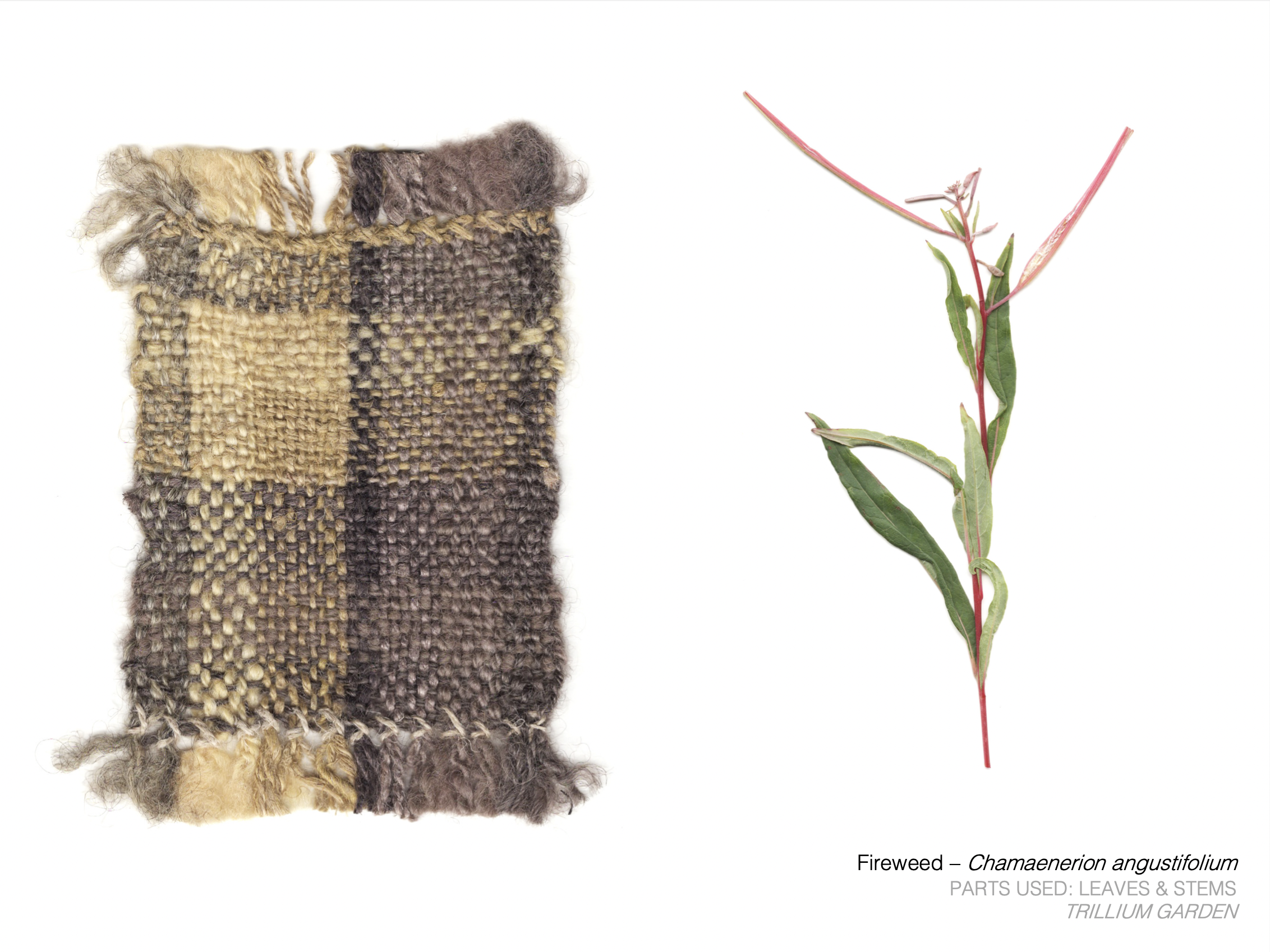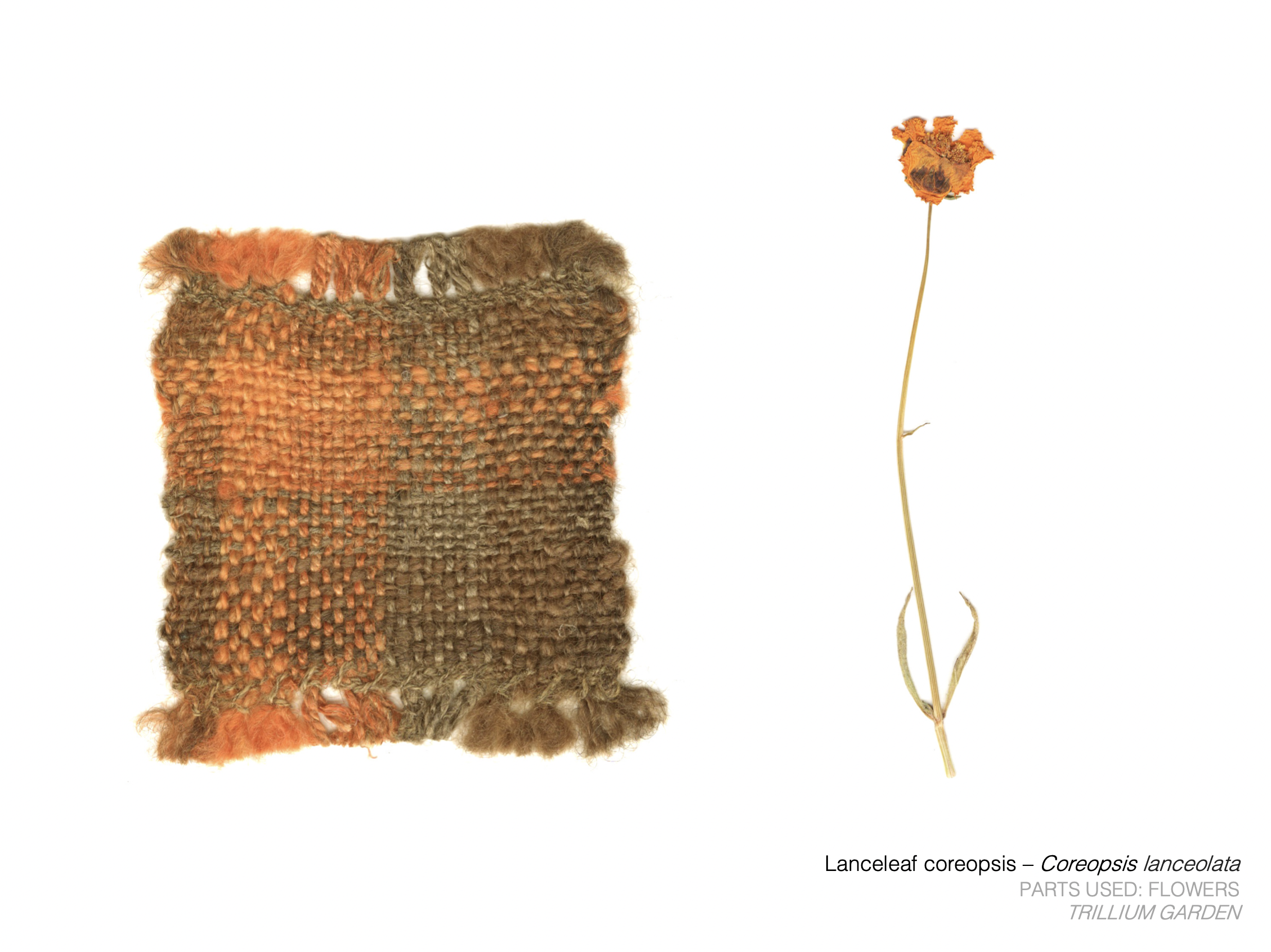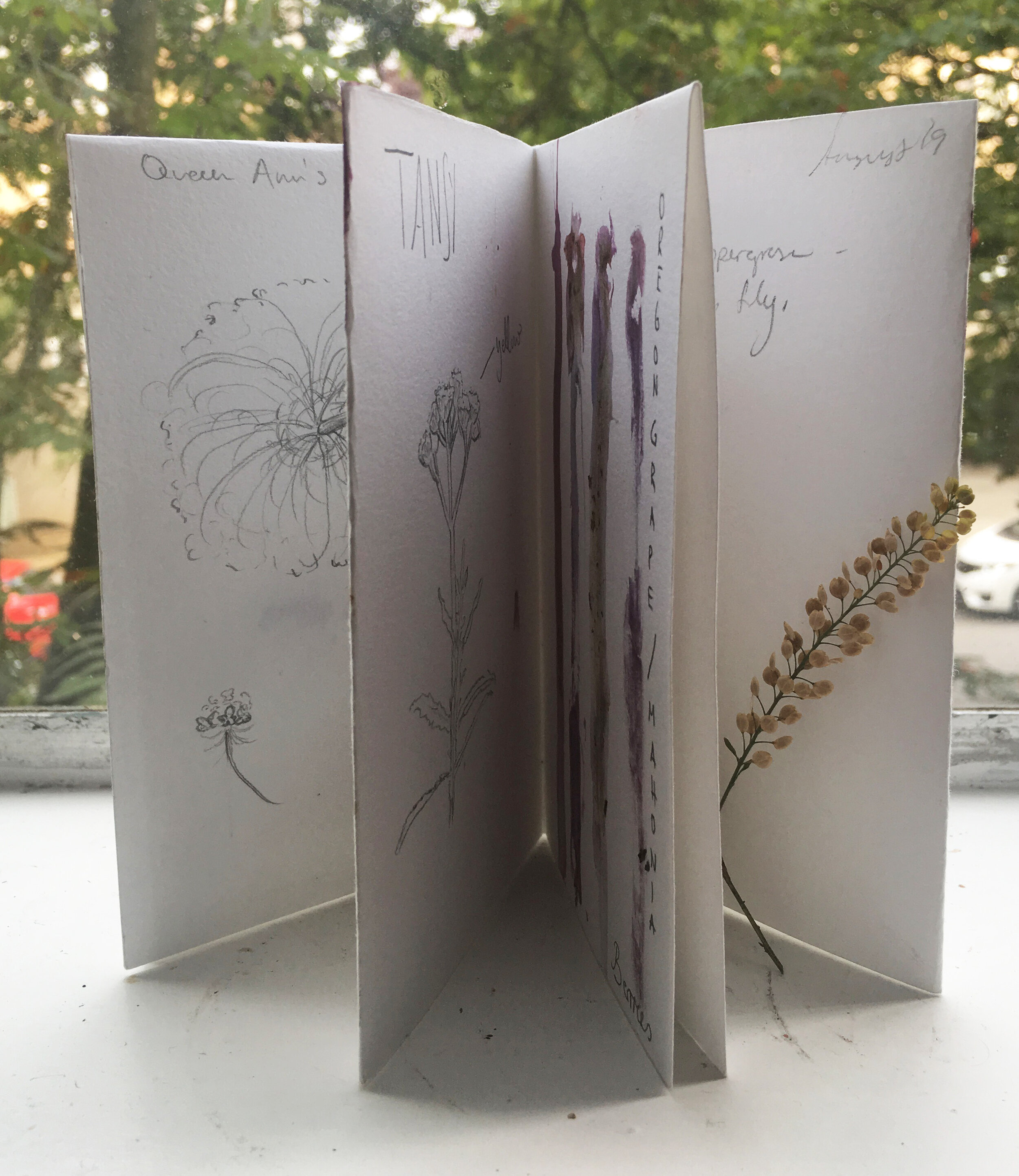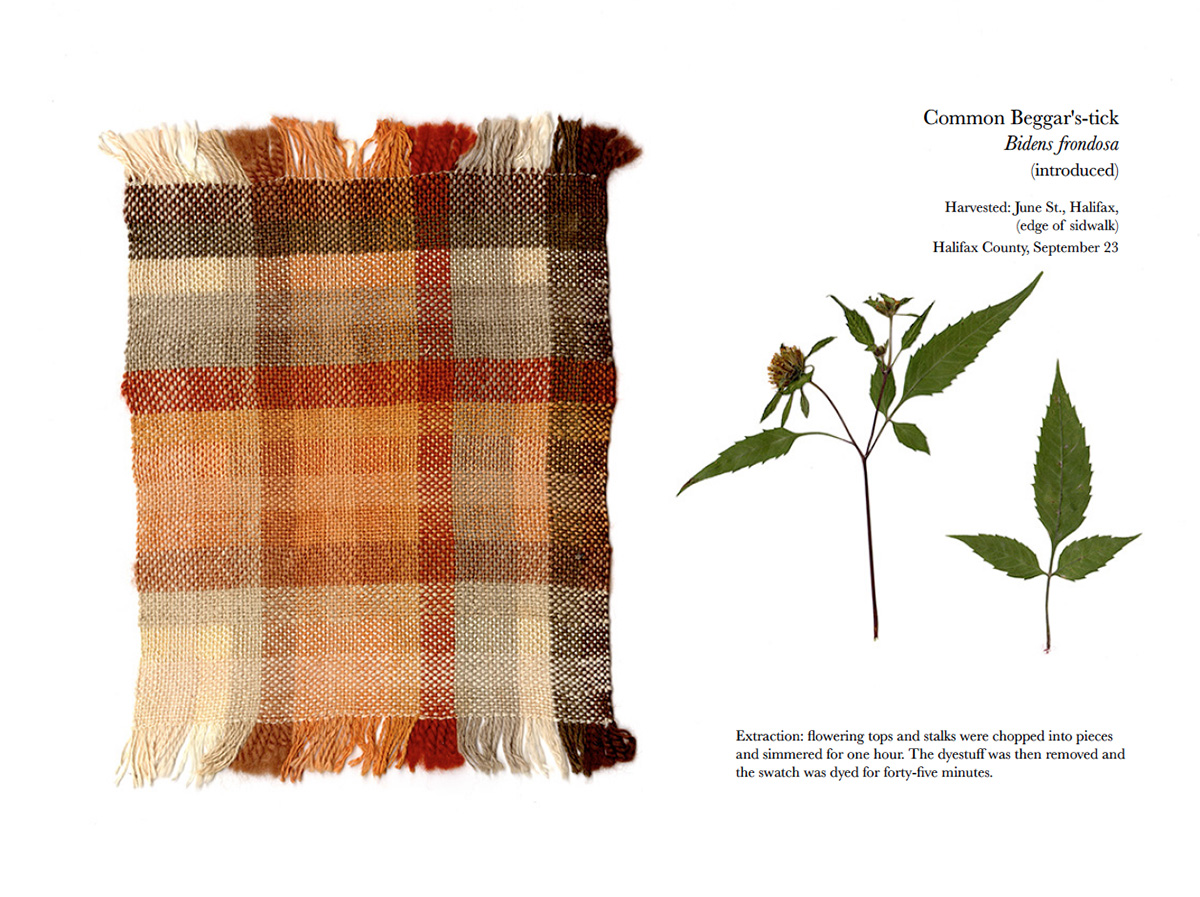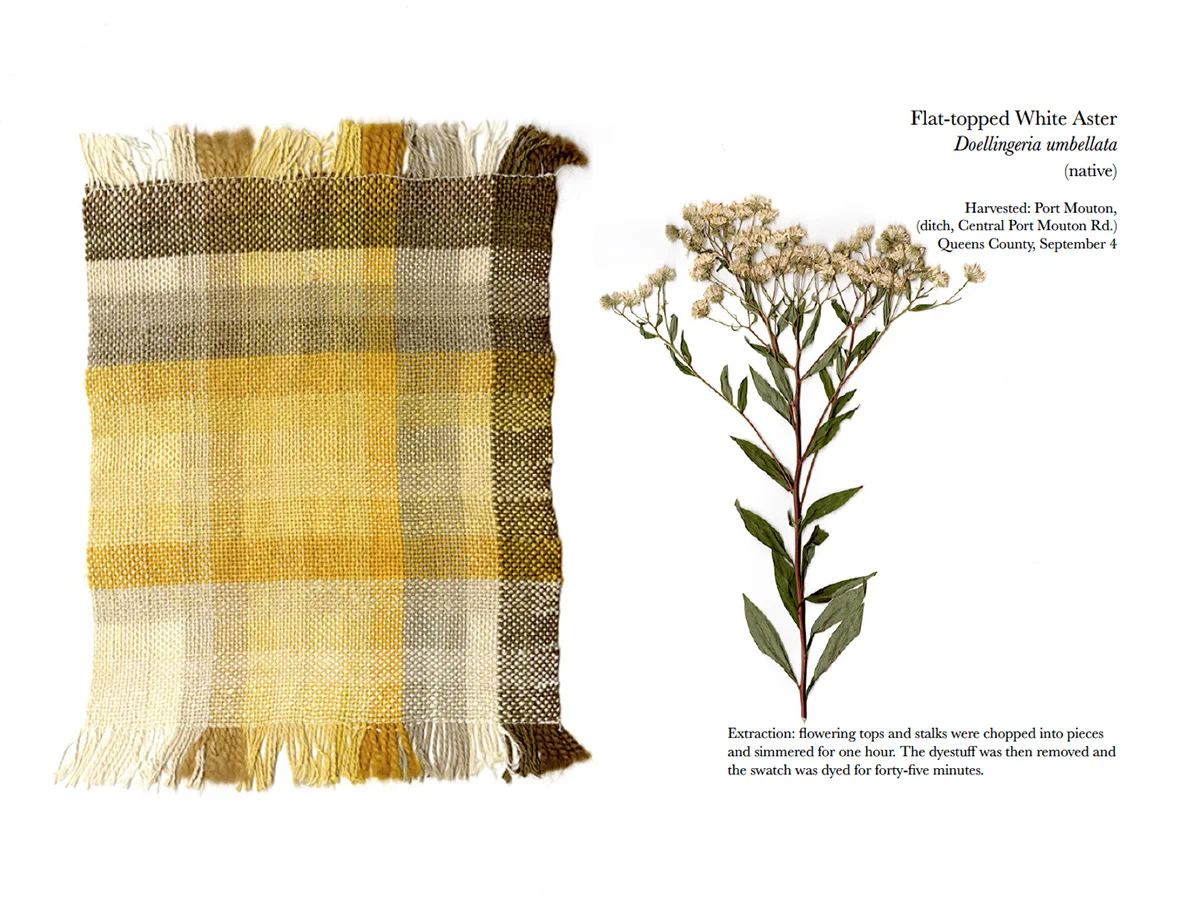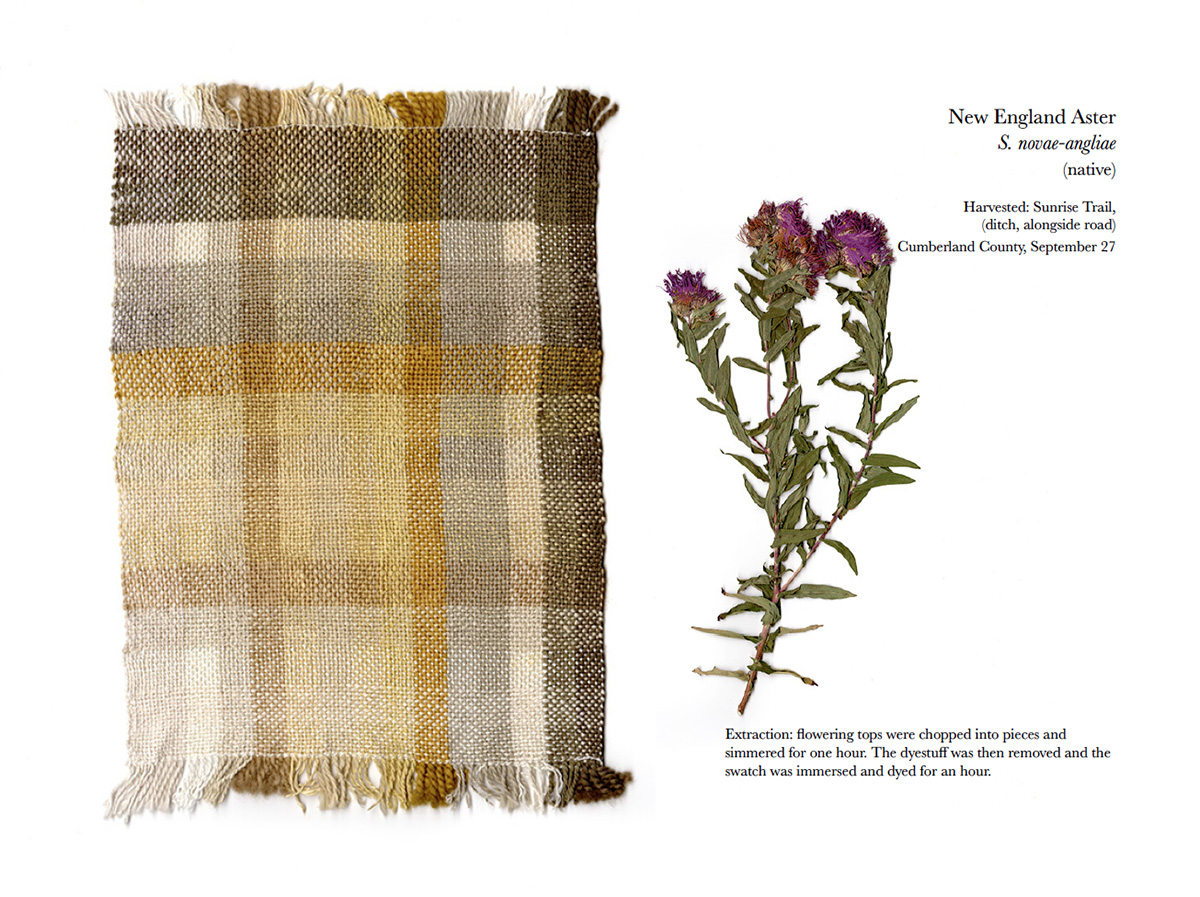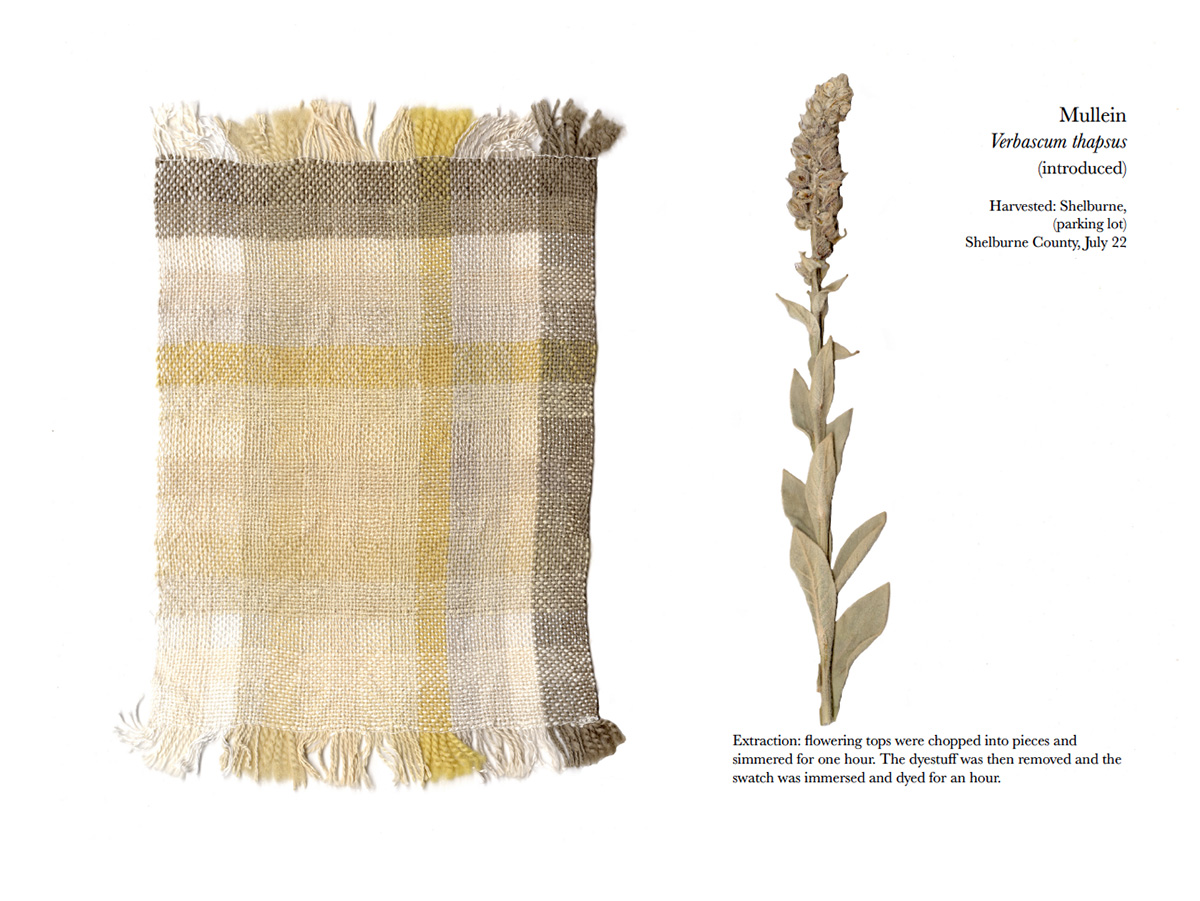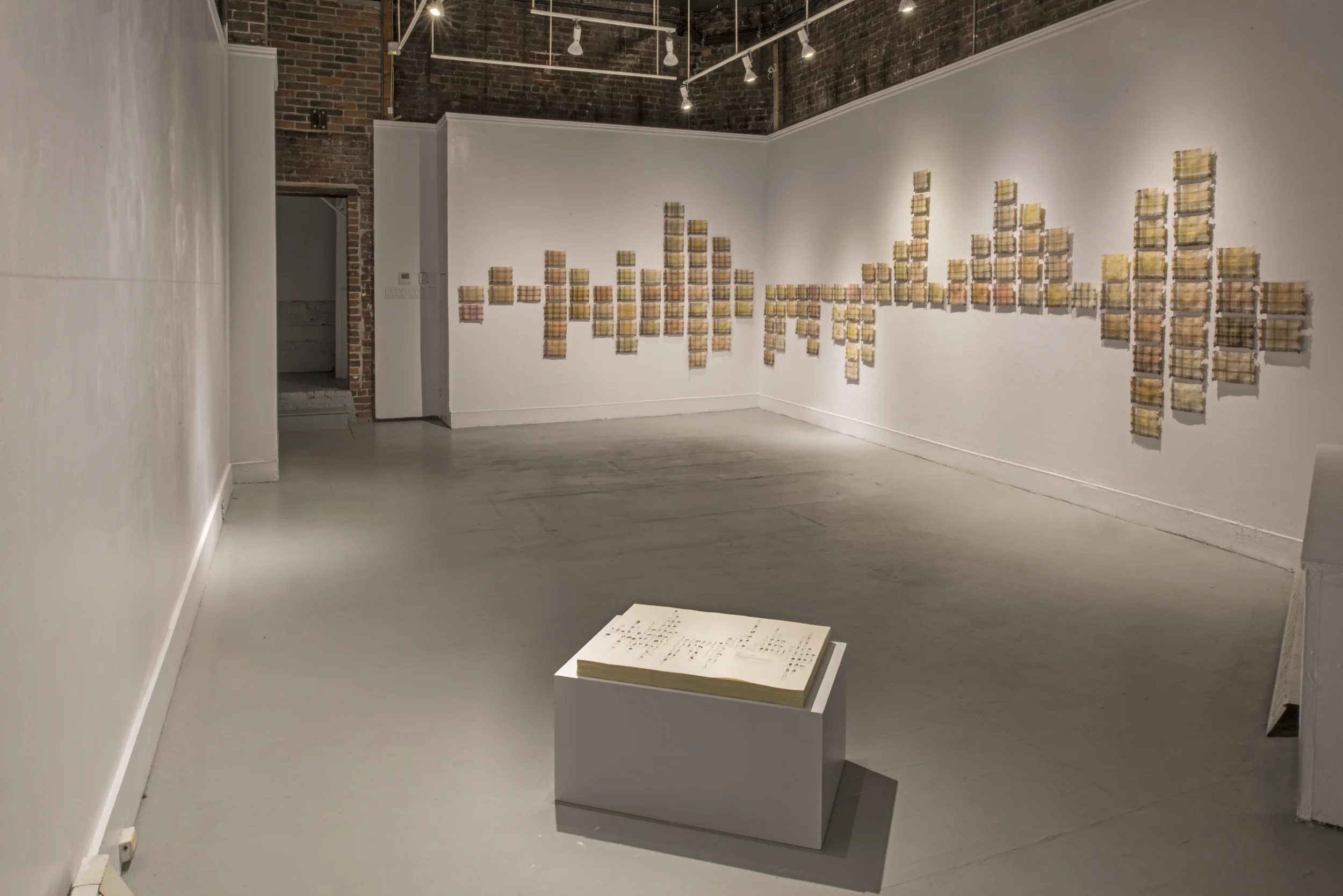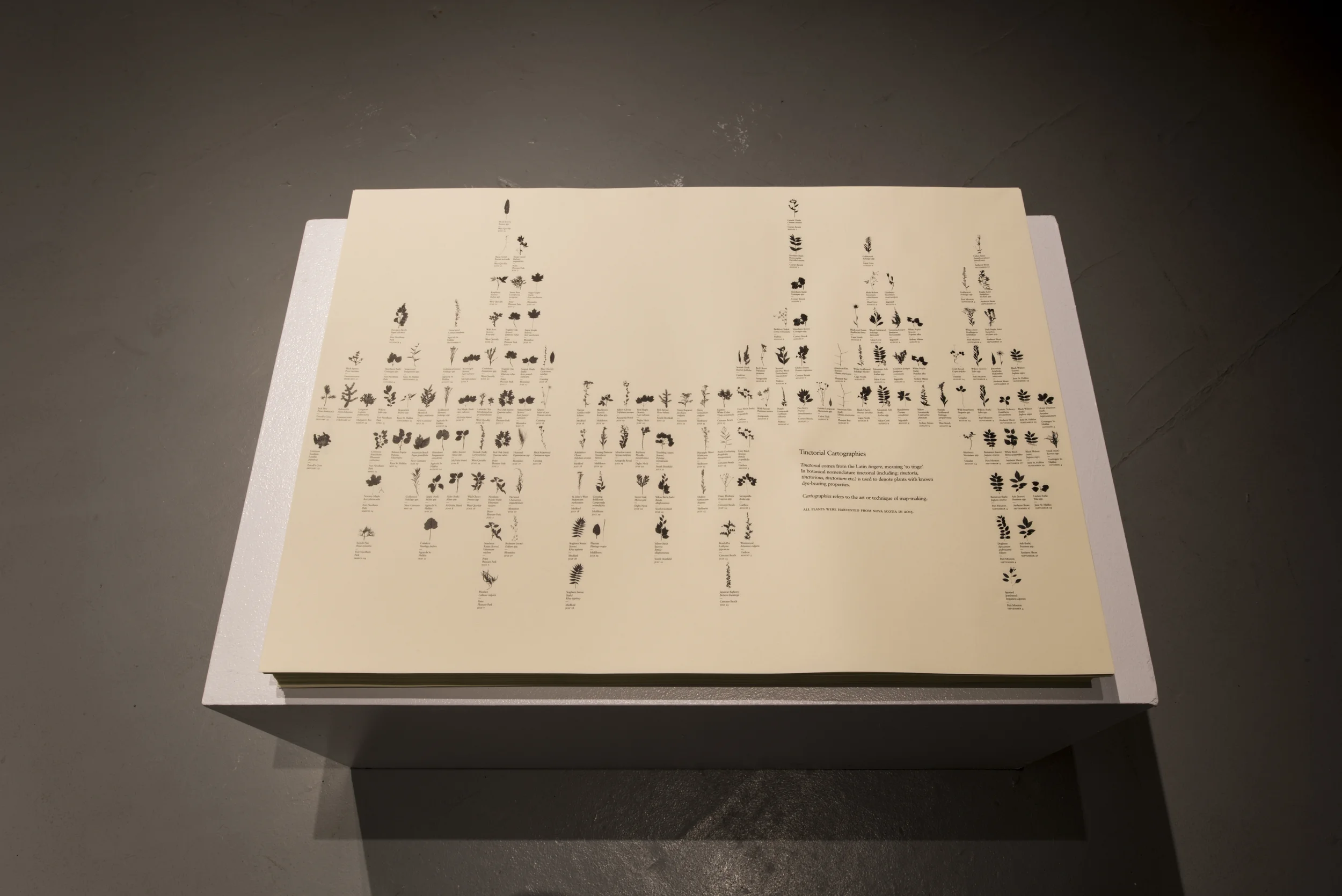The Marigold | Marking | Matrescence project began during the summer after my first child was born. This period of matrescence was marked by a profound upheaval of selfhood—it was a time of transition, a moment between before and after. In the intense bodily experience of early motherhood, I have never felt more mammalian.
That summer, my son and I were invited to be artists-in-residence at a garden site stewarded by Living Systems Network . I didn’t know what, if anything, would come from this time. Art making felt impossible as all my generative energy was being poured into sustaining my son’s growing life. It was the second pandemic summer, another moment between.
The residency was a weekly practice of journeying to the garden. Once there, marigolds became our keystone plant connection, chosen for their profusion and dye-bearing qualities. Pungent layers of yellow, orange, and red petals—blossoms of sunlight. A few modest plants grew hundreds of flowers that summer. It felt as though they were gifting us with their abundance. Filling my cup in a time of drought.
Each week we gathered the blooms that were at the end of their flowering period, later drying and separating them for seed and dye. At the season’s close, a small mountain of petals and seeds had accumulated. Some of these seeds have now been sown in the earth, and the descendants of last year’s plants will grow in the garden this year.
Marigold | Marking | Matrescence is comprised of 113 pieces of paper, relating to the approximate number of days the marigolds bloomed last summer. The work marks a shared period in our respective life cycles—as plant and human, we were simultaneously creating the potential for future iterations of our kind(s) of existence.
The making of the work took place over several months, as everything I create is now affected by the potentials and limitations of parenthood. Paper was layered with dried petals and steeped in water, laying together for hours, days and sometimes weeks in a state of becoming. Each piece of paper now holds a trace of the flowers that bloomed so brilliantly that summer. To me, this work is an expression of gratitude for the presence and generosity of the marigolds—an acknowledgement of these extraordinary plants that stand between seasons, between worlds, between before(s) and after(s).
—————————————————————————————————
Notes:
Matrescence is a term referring to the process of becoming a mother coined by medical anthropologist Dana Raphael.
Living Systems Network collaboratively stewards a garden site on the unceded territory of the xʷməθkʷəy̓əm, Sḵwx̱wú7mesh, and səlilwətaɬ Nations in the neighborhood colonially known as Mount Pleasant, Vancouver.
I use the English vernacular term marigold, as this is the name that I have known these plants by throughout my life—however, there are numerous other names that they hold. The cultural and ecological significance of marigolds is rich and complex with origins in North, Central and South America. They are known as sacred plants in many parts of the world, with longstanding and important human connections—I cannot give voice to the many ways in which marigolds are, and have been, held in cultural relationship. Due to European colonization, the cultivation and human use of marigolds now stretches across the globe (often severed from their indigenous ecological and cultural connections), hence their presence in this garden site.
The piece is shown in the context of the Plant Kingdom exhibition at Dalhousie Art Gallery (2022). Cecil Day’s work is also pictured in the first image.
Photo credit: Steve Farmer






